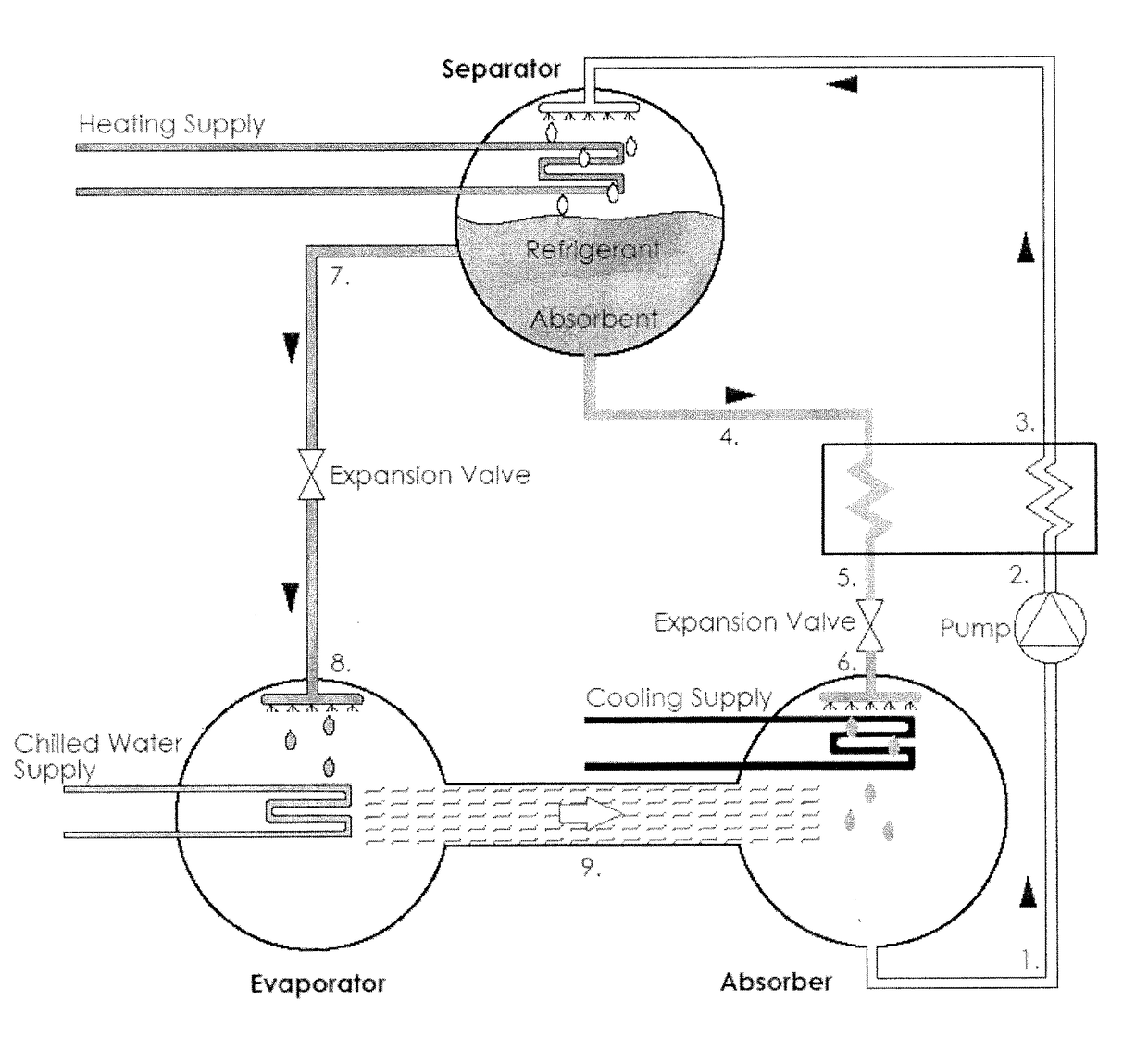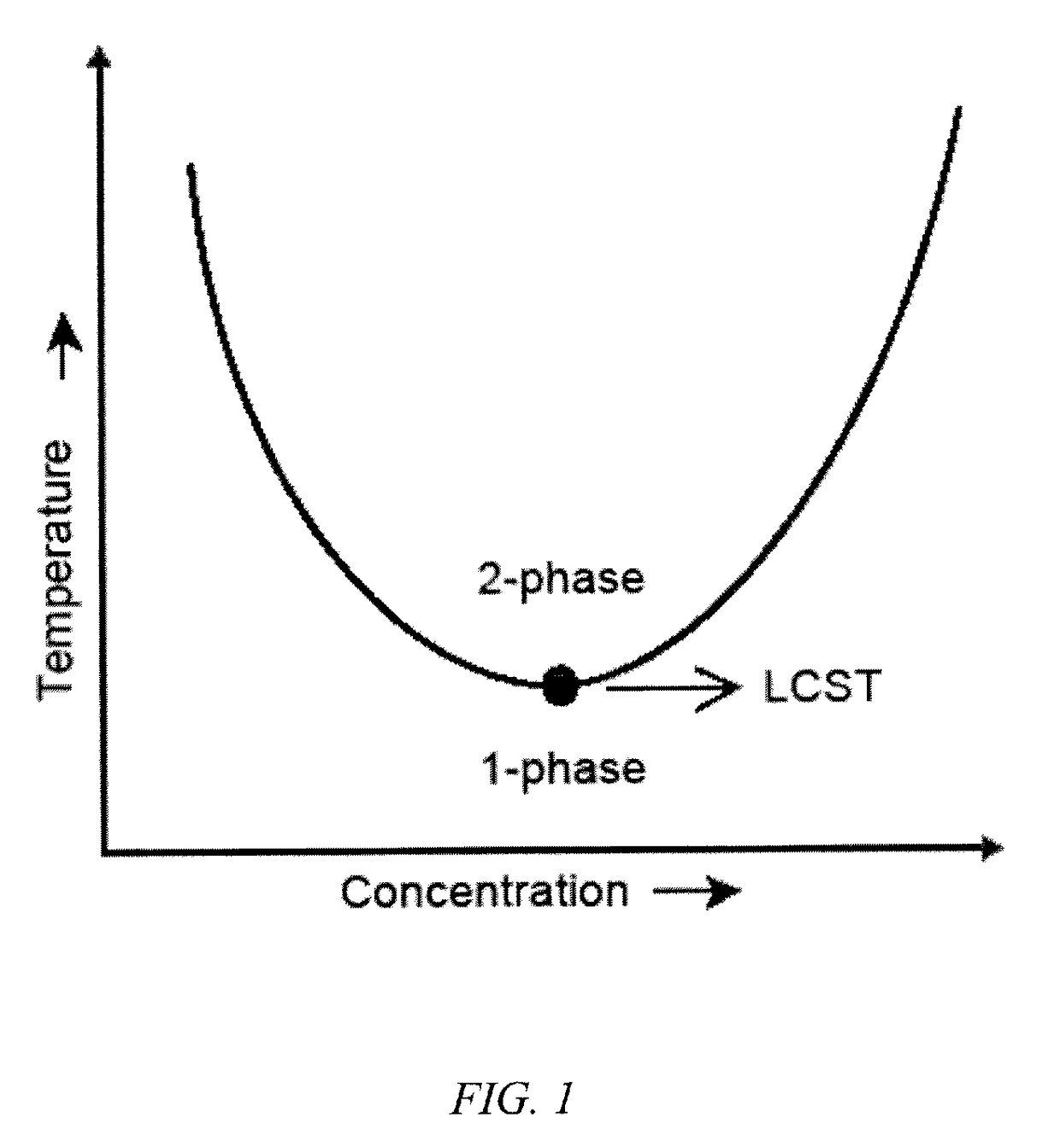Ionic Liquid-based Absorption Cooling System with High Coefficient of Performance
a cooling system and liquid-based technology, applied in the direction of sorption machines, refrigeration machines, light and heating equipment, etc., can solve the problems of low coefficient of performance of absorption systems, the fundamental thermodynamics of cycles, and the inability to significantly improve the coefficient of performance (cop) of absorption systems
- Summary
- Abstract
- Description
- Claims
- Application Information
AI Technical Summary
Benefits of technology
Problems solved by technology
Method used
Image
Examples
Embodiment Construction
[0011]Embodiments of the invention are directed to an absorption refrigeration system (ARS) and absorption refrigeration process where the sorbent, or absorbent) is an ionic liquid (IL) that phase separates from a refrigerant, or absorbate, in a liquid-liquid separator at a lower critical solution temperature (LCST) is employed rather than a desorber, which improves the coefficient of performance (COP). As no phase change is involved in separation, the energy required for vaporizing the refrigerant to permit its subsequent absorption in the concentrated IL sorbent is drastically reduced. The LCST results in phase separation upon heating, as illustrated in FIG. 1. The LCST temperature depends upon the molecular structure of the IL and the refrigerant, and can be about 30 to about 200° C., according to an embodiment of the invention. In an embodiment of the invention, the LCST is about 50-60° C. while the absorber temperature is at least 5° C. below the LCST such that a homogeneous so...
PUM
 Login to View More
Login to View More Abstract
Description
Claims
Application Information
 Login to View More
Login to View More - R&D
- Intellectual Property
- Life Sciences
- Materials
- Tech Scout
- Unparalleled Data Quality
- Higher Quality Content
- 60% Fewer Hallucinations
Browse by: Latest US Patents, China's latest patents, Technical Efficacy Thesaurus, Application Domain, Technology Topic, Popular Technical Reports.
© 2025 PatSnap. All rights reserved.Legal|Privacy policy|Modern Slavery Act Transparency Statement|Sitemap|About US| Contact US: help@patsnap.com



